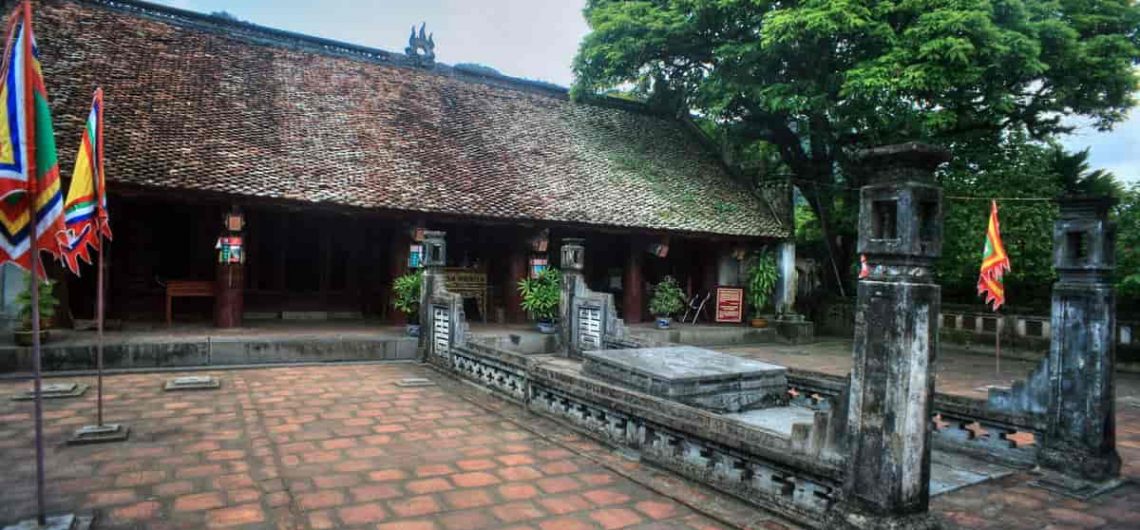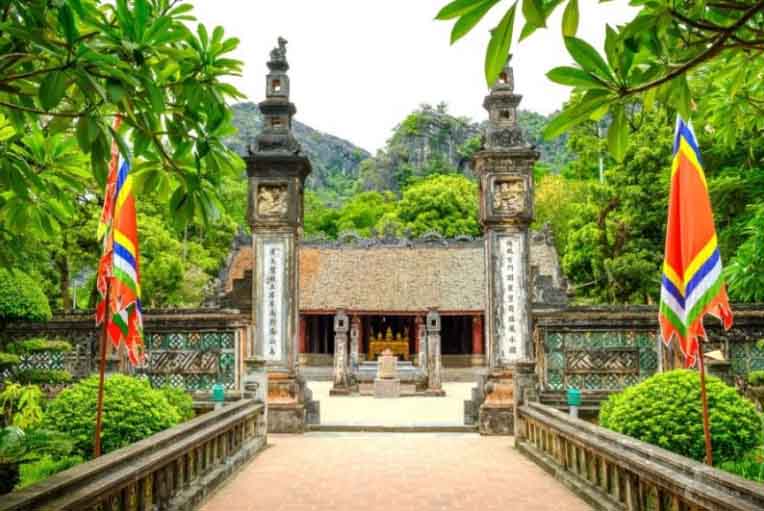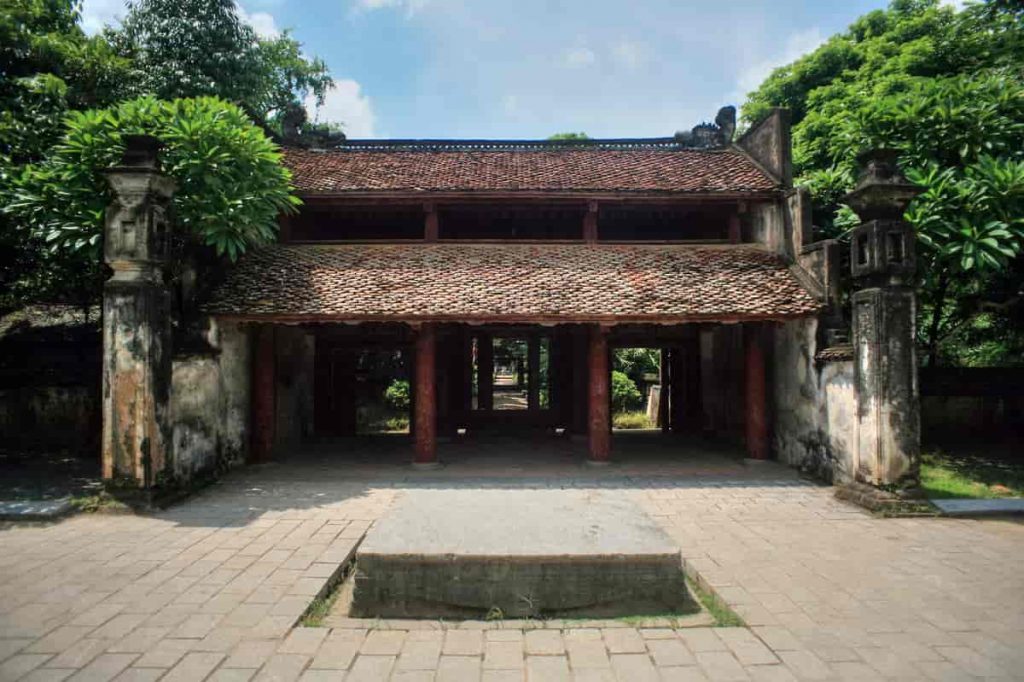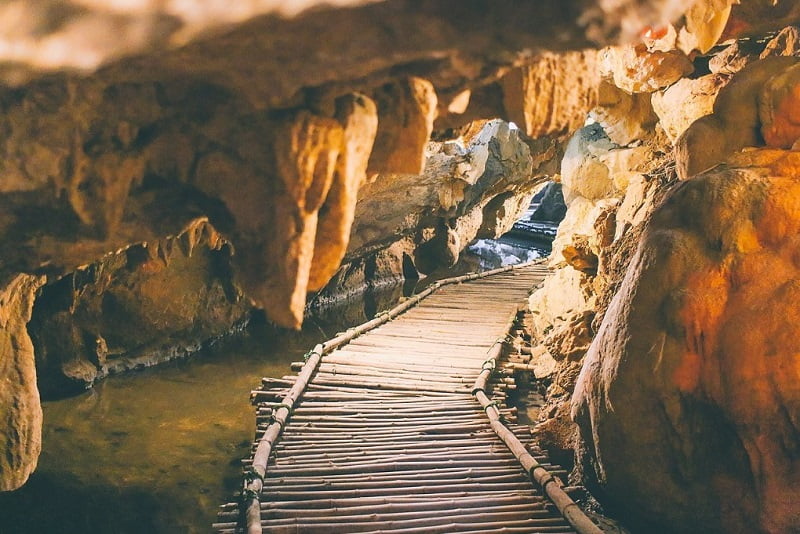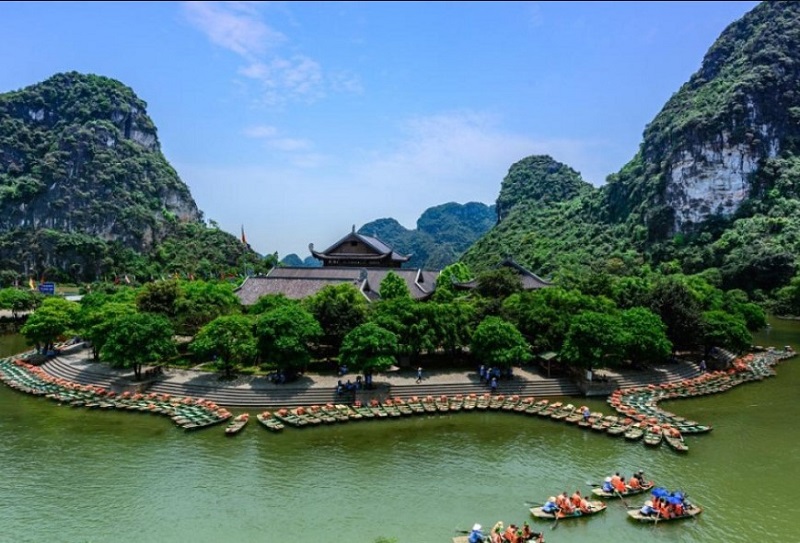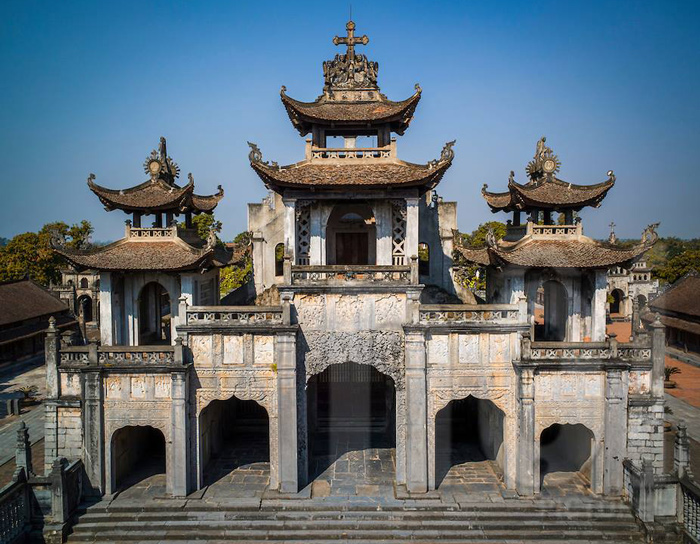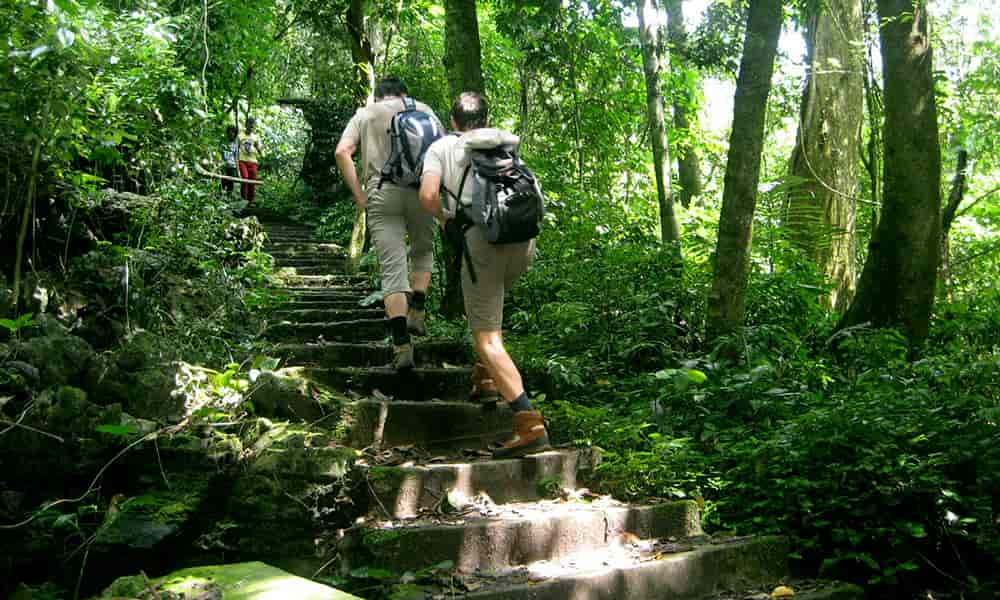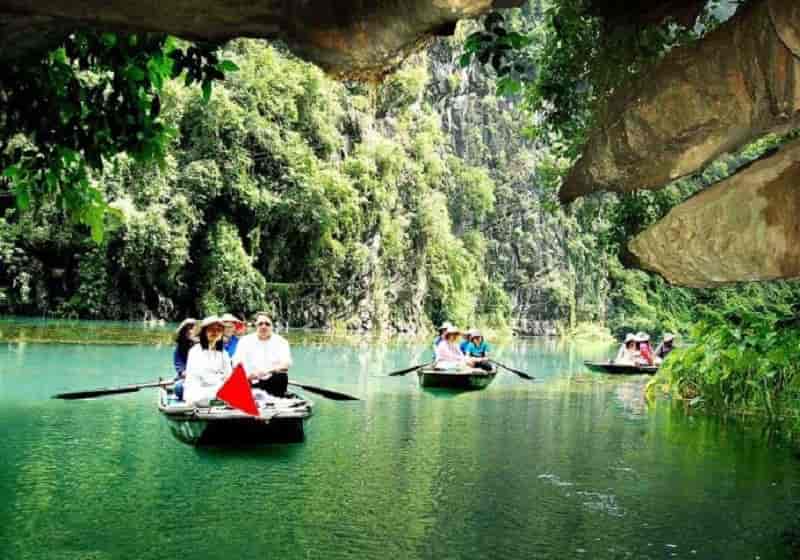With a total area of 25,000 hectares, Cuc Phuong National Park in Ninh Binh is recognized as Vietnam’s largest primeval forest with a diverse ecosystem. It is also a habitat for hundreds of different butterfly species. During the breeding season, butterflies fill the sky, blending with the green hues of the trees, creating a fairy-tale-like setting for visitors. Not only that, but tourists also have the opportunity to explore various points of interest within the park and engage in incredibly interesting experiences.
If you are seeking an outdoor destination to immerse yourself in nature and enjoy the fresh air, this is an excellent choice.
Travel guide to Cuc Phuong National Park in Ninh Binh
Considered Vietnam’s first national park with the characteristic of a tropical rainforest, lush green all year round, and a diverse animal ecosystem, Cuc Phuong National Park has evolved beyond a mere nature reserve to become a renowned tourist destination in Ninh Binh.
Where is Cuc Phuong National Park located?
Cuc Phuong National Park is situated in Ninh Binh province, 45 km northwest of the city center and 120 km southwest of Hanoi. It shares borders with three provinces: Ninh Binh, Hoa Binh, and Thanh Hoa.
How to get to Cuc Phuong National Park in Ninh Binh?
Traveling to Cuc Phuong Forest is convenient, and visitors have various transportation options, including motorcycles, buses, or self-driving cars. Opting for a private car provides more freedom and comfort, allowing stops to admire the beauty of the mountains and landscapes.
- By car and bus: If coming from Hanoi, take the National Highway 1A towards the Gián Khẩu intersection (Gia Vien district, Ninh Binh city, about 10 km away). Continue onto National Highway 12A, pass through Nho Quan town for approximately 2 km, then turn left to reach Cuc Phuong.
- By bus: Travelers can catch a bus from Giap Bat bus station to Nho Quan, then transfer to another bus to reach Cuc Phuong.
- By private car: For those seeking personalized transportation, renting a private car with a driver in Hanoi, such as the services provided by DanangPrivateCar.com, ensures a quick and safe journey to Cuc Phuong National Park. Book your trip from Hanoi to Ninh Binh today for detailed advice.
Additionally, if you’re interested in alternative transportation methods, you can explore more in the article “How to travel from Hanoi to Ninh Binh.”
Ideal Time to Visit Cuc Phuong National Park
Based on shared travel experiences in Ninh Binh, the most suitable time to visit Cuc Phuong National Park is during the dry season, from December to May. During this period, the climate is dry and cool, providing comfortable conditions for exploration. Avoiding the rainy season is advisable, as wet and slippery roads can impact your discovery journey.

Particularly, if you wish to marvel at the sight of numerous butterflies fluttering like white petals across the sky, late April to early May is the optimal time. Millions of butterflies create a magical and romantic atmosphere, resembling a fairyland.
How much is the entrance fee to Cuc Phuong National Park in Ninh Binh?
- Adults: 60,000 VND per ticket
- Students: 20,000 VND per ticket
- Children: 10,000 VND per ticket
Explore the Ecology of Cuc Phuong National Park
The Cave of Prehistoric Man
Dang Cave, also known as the Cave of Prehistoric Man, is a place preserving the values and traces of prehistoric human habitation. It is considered a precious heritage of Cuc Phuong National Park. This site truly represents a unique cultural aspect in the history of humanity.

Con Moong Cave
Located in Thanh Yen commune, Thach Thanh district, Thanh Hoa province, Con Moong Cave is named after a large rock outside the cave that resembles an elongated animal, thus named “Con Moong” (meaning Con Moong animal in the language of the Muong ethnic group). Positioned near a stream with a diverse plant and animal ecosystem, Con Moong Cave served as a dwelling for ancient humans and is an important archaeological site classified as a national monument.
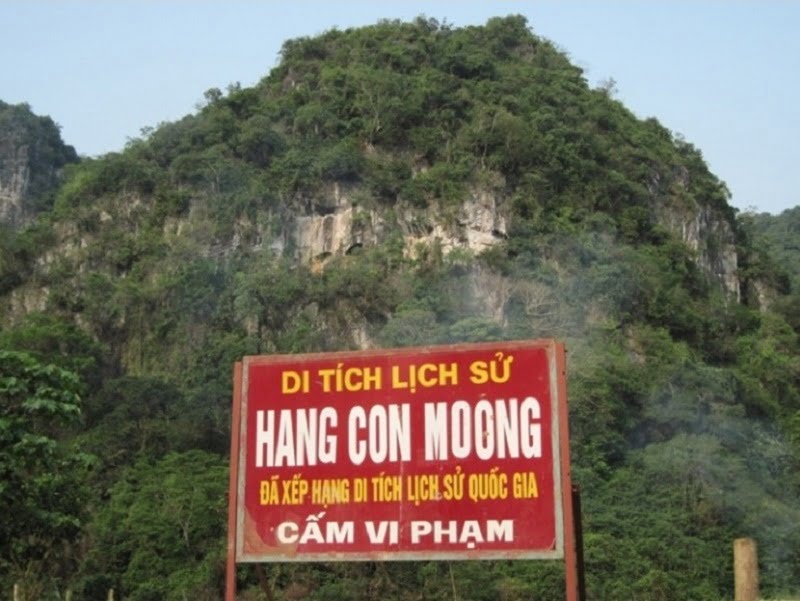
Crescent Moon Cave
Looking from a distance, the external appearance of Crescent Moon Cave resembles a crescent moon. To reach the cave, visitors need to venture deep into the forest. Therefore, it is essential for visitors not to move independently or separate from the group and to have a guide.

Silver Cloud Peak
Situated at an altitude of 648m, visitors can enjoy panoramic views of the entire national park, Bai Dinh Pagoda, and the ancient capital of Hoa Lu from Silver Cloud Peak. However, reaching the summit can be challenging due to steep slopes, making it suitable for adventurous and experienced explorers. Therefore, it is advisable to accompany someone familiar with the terrain.

Yen Quang Lake – Pho Ma Cave
Travelers need to backtrack about 8km towards Nho Quang, and upon reaching Tri Phuong Bridge, turn west to reach Yen Quang. Moving through the Thung La area towards the foot of the main rocky mountain leads to Pho Ma Cave. Pho Ma Cave is known for its mystical natural architecture, featuring various stalactite formations that create an extraordinary cave structure.

Ancient Tree Stump
In Cuc Phuong National Park, there are numerous ancient trees, such as the tall Caodang tree, approximately 45m high with a diameter of 5m. To reach this location, visitors should follow the road accessible by car, pass through the Ancient People Cave for about 2km, and look to the left for the ancient tree stump. Along the way, visitors may encounter various rare species such as red-headed woodpeckers, white-rumped shamas, or black squirrels. Additionally, there is a thousand-year-old Choxanh tree with a circumference equivalent to 20 adults, showcasing the diverse plant life worth exploring.

Ancient Sycamore Tree
Apart from the famous ancient trees, there is another intriguing tree that piques visitors’ curiosity – the sycamore tree. Standing at approximately 45m tall, the sycamore tree has large root systems branching out from the trunk at heights ranging from 10m to 20m. Along the route to the sycamore tree, visitors can admire the beauty of climbing vines, epiphytes, and bird nests. Furthermore, various animals such as woodpeckers, flat-bellied vipers, and singing birds contribute to the tranquil and enchanting atmosphere.

Muong Village
Cuc Phuong Forest is home to the Muong ethnic minority, characterized by a simple and peaceful lifestyle. Their unique cultural features, such as stilt houses, terraced fields, and traditional weaving frames, present an interesting aspect of this community. Visitors should not miss the opportunity to take picturesque photos and experience the culture and traditions of the local ethnic group.
Primate Rescue Center
This center serves as a conservation site for numerous primate species and other endangered animals. When visiting, tourists gain a deeper understanding of primate species and learn interesting facts about these animals. Don’t miss the chance to explore this fantastic location if you have the opportunity to visit.
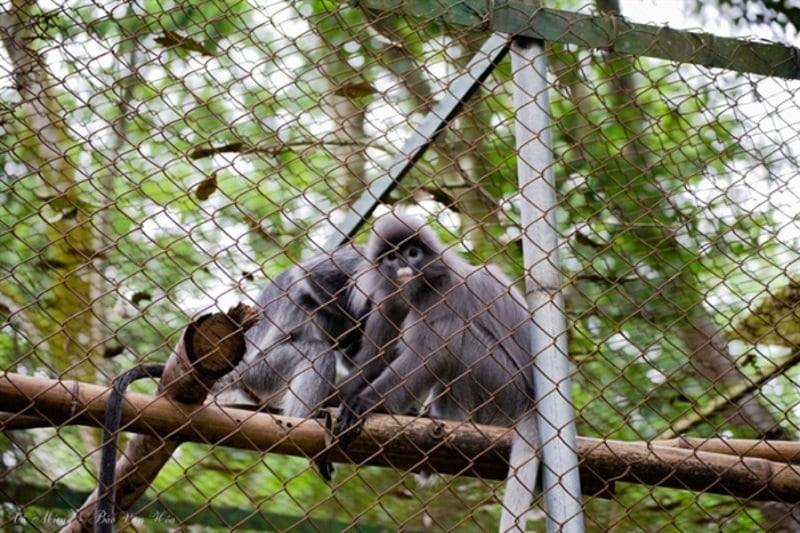
What interesting experiences does Ninh Binh National Park offer?
Visitors here, besides exploring the diverse flora and enjoying the beautiful natural scenery, can participate in various eco-tourism programs, relaxation activities, camping, adventure, and more.
Trekking in the deep Cuc Phuong National Park
Cuc Phuong has developed many trekking trails through the forest with different exploration content. Visitors can choose to explore on their own, but under the guidance of a guide, you will undoubtedly gain a better understanding of the flora and fauna here, making the journey more interesting and appealing.

Kayaking – the most interesting experience in Cuc Phuong National Park
One of the activities that many visitors love is kayaking on Mac Lake and Yen Quang Lake. The feeling of gently swaying on the water while admiring the surrounding natural scenery is truly wonderful.
Visit Cuc Phuong National Park to see butterflies
In recent years, Cuc Phuong National Park in Ninh Binh has become known for its “specialty,” which is the multitude of butterflies flying in late spring and early summer. With over 400 species of butterflies in various colors, competing to show off their beauty from white to navy blue, earthy brown, rosy pink, etc., it creates a dazzling, mystical picture of Cuc Phuong. If you want to admire this scene, you should plan your visit around late April to early May!

Biking to Explore Cuc Phuong National Park in Ninh Binh
This is a form of exploring the natural mysteries of Cuc Phuong. Biking through the forest will not only give visitors a sense of tranquility and a true appreciation for nature but also provide the opportunity to encounter rare wildlife.

Moreover, for those enthusiasts who want to delve deeper into the ecosystem here, they can participate in experiences such as birdwatching, observing various animals, reptiles, amphibians, or join community activities and enjoy the ethnic cultural performances. All of these contribute to unique and interesting experiences.
Accommodation near Cuc Phuong Forest
At Cuc Phuong National Park, accommodation is divided into three areas: dining, entertainment, and lodging.
- Park entrance area: Here, there are various lodging options with room prices ranging from 200,000 VND/ticket. The services provided include mountain bikes for rent.
- Ho Mac area: Offers communal stilt houses and fully equipped rooms, ideal for large groups of travelers. In the evening, guests can light a campfire for warmth and enjoy singing and cultural exchanges.
- Central area: Visitors can rent upscale apartments or stilt houses with the most comprehensive facilities.
Delicious Specialties at Cuc Phuong
After exploring the natural landscape of Cuc Phuong National Park, visitors can rest and enjoy local specialties such as goat meat and mountain snails. Additionally, there are many other enticing and interesting dishes like grilled backyard chicken, fried carp, and a sip of Muong rice wine.
Some Notes Before Visiting Cuc Phuong National Park
Before visiting Cuc Phuong National Park, tourists should prepare essential items to avoid inconvenience during the exploration. Recommended items include:
- Comfortable sports shoes and clothing, breathable and rainproof.
- Hat, medicine, and some light snacks to avoid carrying heavy loads.
- Camera and binoculars for capturing beautiful photos and getting a clear view of the surrounding mountains and forests.
DanangPrivateCar.com’s has shared the most detailed tourist attractions in Cuc Phuong National Park. It is hoped that the article from DanangPrivateCar.com will provide you with more experience for your exploration of this famous destination. What are you still worried about? Plan your trip now for an extremely exciting vacation.


